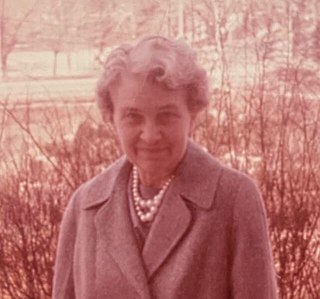Related Research Articles

A frontier is the political and geographical area near or beyond a boundary. A frontier can also be referred to as a "front". The term came from French in the 15th century, with the meaning "borderland"—the region of a country that fronts on another country. Unlike a border—a rigid and clear-cut form of state boundary—in the most general sense a frontier can be fuzzy or diffuse. For example, the frontier between the Eastern United States and the Old West in the 1800s was an area where European American settlements gradually thinned out and gave way to Native American settlements or uninhabited land. The frontier was not always a single continuous area, as California and various large cities were populated before the land that connected those to the East.

Harold Adams Innis was a Canadian professor of political economy at the University of Toronto and the author of seminal works on media, communication theory, and Canadian economic history. He helped develop the staples thesis, which holds that Canada's culture, political history, and economy have been decisively influenced by the exploitation and export of a series of "staples" such as fur, fish, lumber, wheat, mined metals, and coal. The staple thesis dominated economic history in Canada from the 1930s to 1960s, and continues to be a fundamental part of the Canadian political economic tradition.
The historical school of economics was an approach to academic economics and to public administration that emerged in the 19th century in Germany, and held sway there until well into the 20th century. The professors involved compiled massive economic histories of Germany and Europe. Numerous Americans were their students. The school was opposed by theoretical economists. Prominent leaders included Gustav von Schmoller (1838–1917), and Max Weber (1864–1920) in Germany, and Joseph Schumpeter (1883–1950) in Austria and the United States.
In economic development, the staples thesis is a theory of export-led growth. The theory "has its origins in research into Canadian social, political, and economic history carried out in Canadian universities...by members of what were then known as departments of political economy." From these groups of researchers, "the two most prominent scholars following this approach were Harold Innis and W.A. Mackintosh."

Donald Grant Creighton was a Canadian historian whose major works include The Commercial Empire of the St-Lawrence, 1760–1850, a detailed study on the growth of the English merchant class in relation to the St Lawrence River in Canada. His biography of John A. Macdonald, published into two parts between 1952 and 1955, was considered by many Canadian historians as re-establishing biographies as a proper form of historical research in Canada. By the 1960s Creighton began to move towards a more general history of Canada.

Canadian historians until the 1960s tended to focus on the history of Canada's economy because of the far fewer political, economic, religious and military conflicts present in Canadian history than in other societies. Many of the most prominent English Canadian historians from this period were economic historians, such as Harold Innis, Donald Creighton and Arthur R. M. Lower.
James Maurice Stockford Careless was a Canadian historian.
Arthur Reginald Marsden Lower was a Canadian historian and "liberal nationalist" interested in Canadian economic history, particularly the forest trade, and in Canada–US relations. He was the most nationalistic of Canadian historians, and highly distrustful of immigrants, Americans and any others outside of what he considered to be the Canadian family. The staple theory of Harold Innis influenced his research, much of which focused on the Canadian lumber industry. He was also strongly influenced by the ideas of American historian Frederick Jackson Turner regarding the influence of the frontier – The West – on distinctly American characteristics. Lower was an outdoorsman who not only loved nature, but emphasized the role of The North in shaping Canada.
The Canadian Centenary Series is a nineteen-volume history of Canada published between 1963 and 1987 as an extended Canadian Centennial project. The collection resulted from the initiative of two of Canada's leading 20th century historians, W. L. Morton and D. G. Creighton. Morton served as the initial executive editor, and Creighton served as the advisory editor. The editors approached leading Canadian historians to write the individual volumes. The series was published by the Canadian publishing house, McClelland & Stewart.
The J. B. Tyrrell Historical Medal is an award of the Royal Society of Canada "for outstanding work in the history of Canada." It was established in 1927, endowed by the Canadian geologist and amateur historian Joseph Burr Tyrrell. The medal is awarded every two years if there is a suitable candidate. The award consists of a gold plated silver medal.
Robin F. Neill (1931–2014) was a Canadian economic historian who was a longstanding professor at Carleton University in Ottawa then, latterly, at the University of Prince Edward Island.

Monopolies of knowledge arise when the ruling class maintains political power through control of key communications technologies. The Canadian economic historian Harold Innis developed the concept of monopolies of knowledge in his later writings on communications theories.
The Fur Trade in Canada: An Introduction to Canadian Economic History is a book written by Harold Innis covering the fur trade era in Canada from the early 16th century to the 1920s. First published in 1930, it comprehensively documents the history of fur trading while extending Innis's analysis of the economic and social implications of Canada's reliance on staple products. The book focuses on the far-reaching effects of new techniques and technologies in the contact between European and Indigenous civilizations and shows how co-operation and rivalries among French, English and Indigenous peoples shaped the history of the northern half of North America. Finally, the book tries to show how Canada emerged as a nation with boundaries largely determined by the fur trade. Canada, Innis argues, "emerged not in spite of geography, but because of it."

The Cod Fisheries: The History of an International Economy is a 1940 book by Harold Innis.
Harold Adams Innis was a professor of political economy at the University of Toronto and the author of seminal works on Canadian economic history and on media and communication theory. He helped develop the staples thesis, which holds that Canada's culture, political history and economy have been decisively influenced by the exploitation and export of a series of staples such as fur, fish, wood, wheat, mined metals and fossil fuels. Innis's communications writings explore the role of media in shaping the culture and development of civilizations. He argued, for example, that a balance between oral and written forms of communication contributed to the flourishing of Greek civilization in the 5th century BC. But he warned that Western civilization is now imperiled by powerful, advertising-driven media obsessed by "present-mindedness" and the "continuous, systematic, ruthless destruction of elements of permanence essential to cultural activity."
George Williams Brown (1894–1963) was a Canadian historian and editor. Born on April 3, 1894, in Glencoe, Middlesex County, Ontario, and died on October 19, 1963, in Ottawa, Ontario.

The historiography of Canada deals with the manner in which historians have depicted, analyzed, and debated the history of Canada. It also covers the popular memory of critical historical events, ideas and leaders, as well as the depiction of those events in museums, monuments, reenactments, pageants and historic sites.

Mary Emma Quayle Innis was a Canadian novelist, short story writer and author of historical works including An Economic History of Canada; three illustrated books for children about the country's founding; a history of the Canadian YMCA; and, Travellers West, an account of three 19th century expeditions across western Canada. In addition, she researched and edited several books about women and Canadian history including a scholarly edition of Mrs. Simcoe's Diary, kept from 1791 to 1796, by Elizabeth Posthuma Simcoe, the wife of John Graves Simcoe, the first Lieutenant Governor of Upper Canada.
Tina Merrill Loo is a Canadian historian. Loo is a professor of history at the University of British Columbia (UBC) with interests in Canadian, legal and environmental history. At UBC she has held a Canada Research Chair in Environmental History and a Brenda and David McLean Chair in Canadian Studies.
References
- ↑ Friesen, Gerald. "The Canadian Prairies: A History"
- ↑ Careless, J. M. S. (1979). "Metropolis and Region: The Interplay between City and Region in Canadian History before 1914". Urban History Review (3–78): 99. doi: 10.7202/1019408ar . ISSN 0703-0428.
- ↑ Innis, Harold (1927). The Fur Trade in Canada. Toronto: University of Toronto Press.
- ↑ Innis, Harold (1923). A History of the Canadian Pacific Railway. Toronto: McClelland and Stewart
- ↑ Easterbrook, W.T.; Aitken, Hugh (1988-01-31). Canadian Economic History. Toronto: University of Toronto Press. doi:10.3138/9781442623279. ISBN 9781442623279.
- ↑ Creighton, Donald (1956). The Empire of the St. Lawrence. Toronto: Macmillan.
- ↑ Careless, J. M. S (March 1964) Frontierism, Metropolitanism, and Canadian History The Canadian Historical Review 35 No 1 pp. 14
- ↑ Berger, Carl (1976). "The Writing of Canadian History". The American Historical Review. doi:10.1086/ahr/82.5.1365. ISSN 1937-5239.
- ↑ Careless, J. M. S (March 1964) Frontierism, Metropolitanism, and Canadian History The Canadian Historical Review 35 No 1 pp. 16